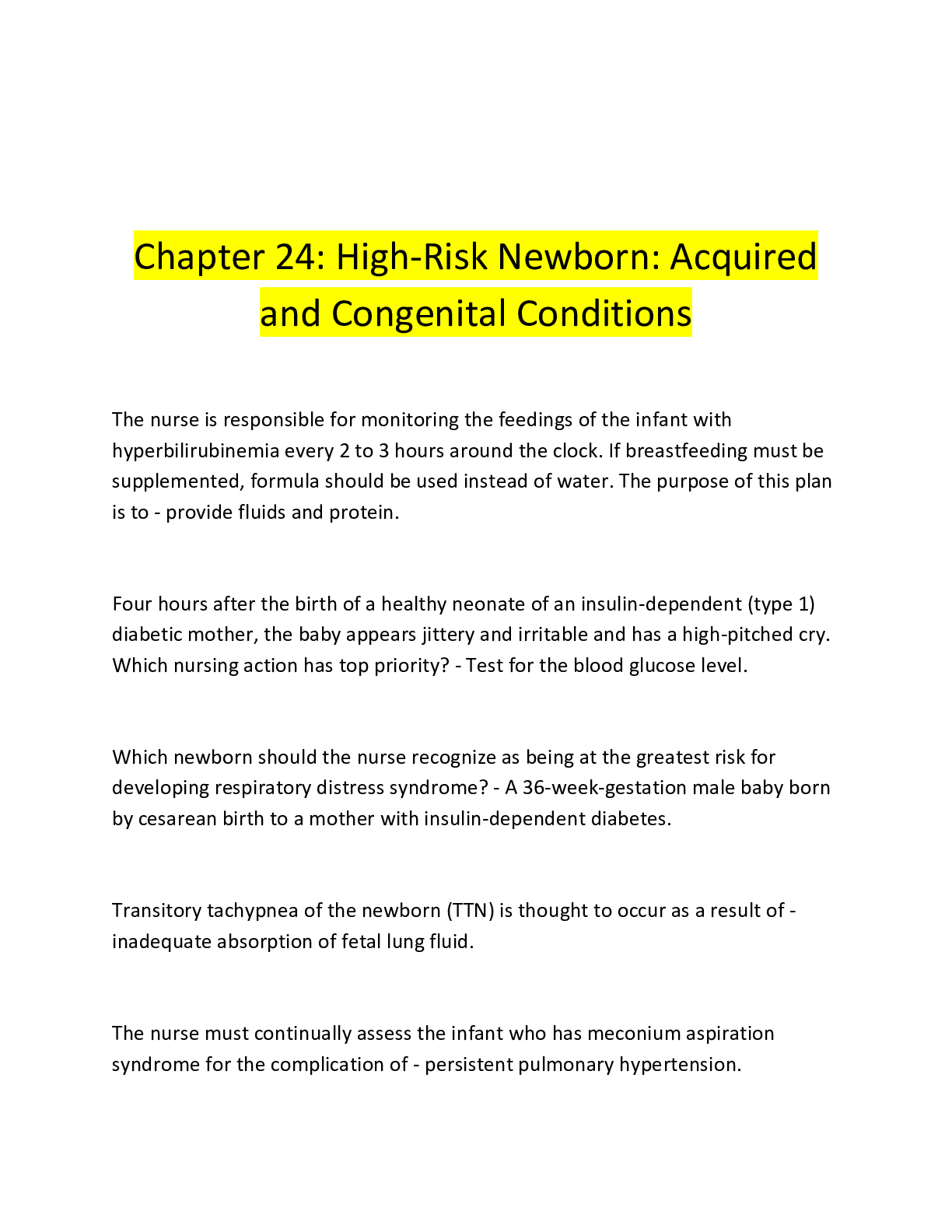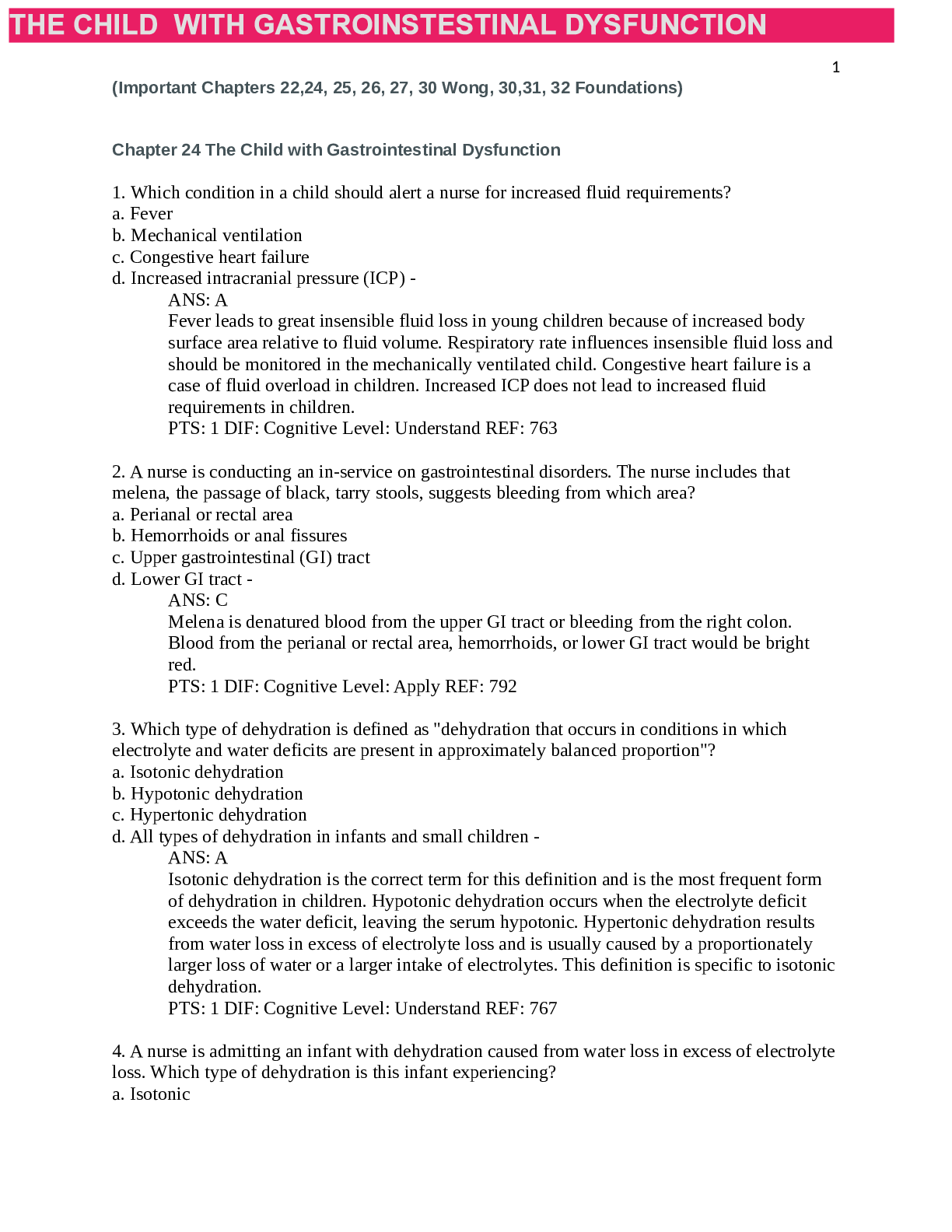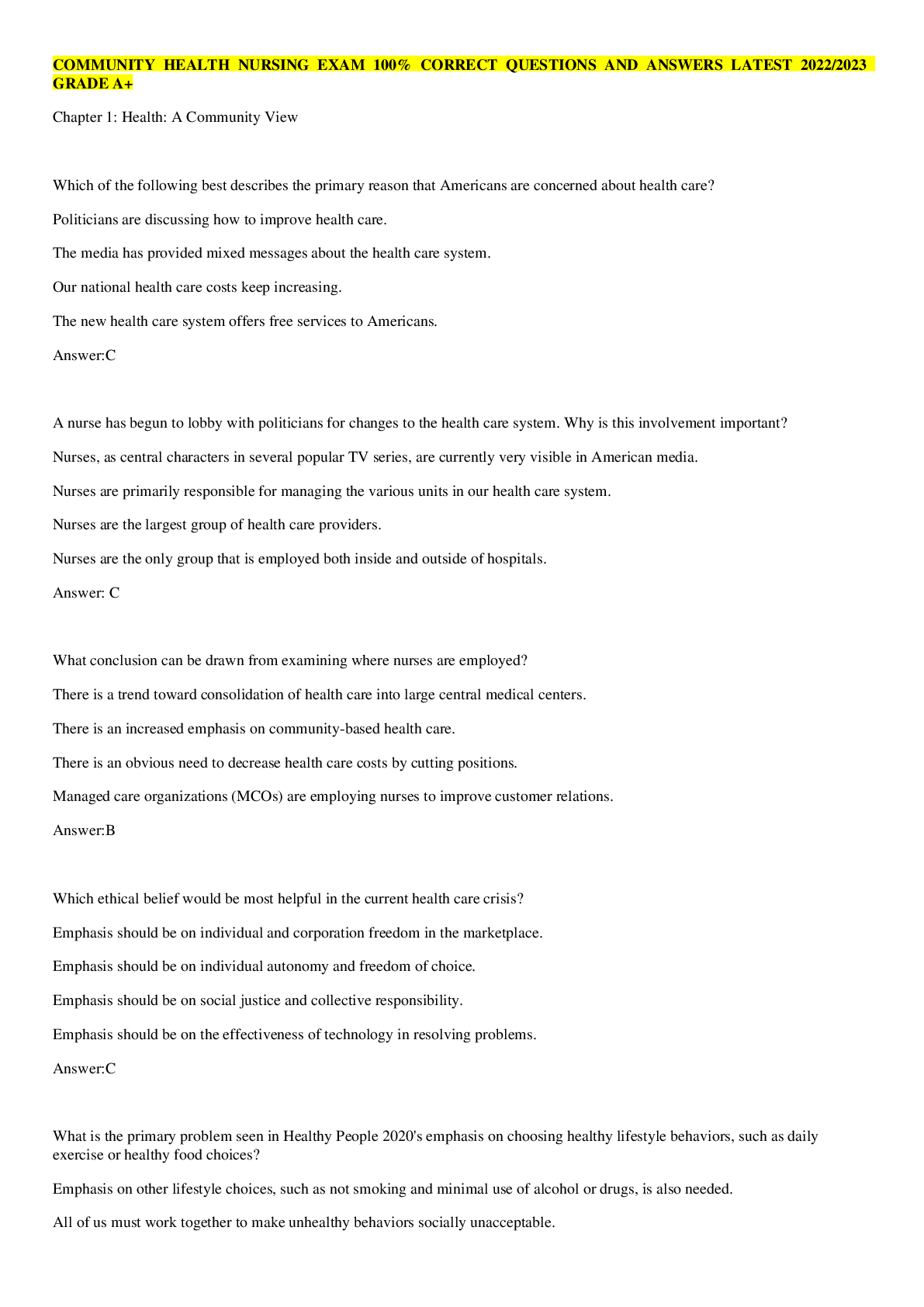*NURSING > QUESTIONS & ANSWERS > Maryville 615 Pharm Exam 6 complete questions rated 100% correct (All)
Maryville 615 Pharm Exam 6 complete questions rated 100% correct
Document Content and Description Below
What are the precautions and contraindications when prescribing phentermine? It carries a high risk of tolerance and dependence, physically and psychologically. Caution using with patients with histo... ry of alcohol or drug dependence because of cross-tolerance. Actively drinking alcoholics can get depression, paranoia, or psychoses when taking phentermine. Use should be limited to max of 6 months. Contraindicated in patients who abuse substances such as cocaine, meth or PCP because of potential for excessive adrenergic stimulation. Patients with diabetes may experience altered insulin or hypoglycemic dosage requirements. What is the length of time that anorexiants should be prescribed? 6 months is the max amount of time for treatment with anorexiant. Alternative treatment regime-use the drug for a few weeks. What is rectal diazepam (Diastat) used to treat? Not found in the text at all. Per Micromedex, it is indicated in refractory seizures in adults and children as an adjunctive treatment. FDA labeled for alcohol withdrawal symptoms, anxiety, sedation, skeletal muscle spasm, tetanus, skeletal muscle spasms, adjunctive treatment, and status epilepticus. Per Epocrates, used as adjunctive treatment for seizure disorder in adults and children age 2 and up. What is phenytoin hypersensitivity syndrome and when does it occur? Phenytoin hypersensitivity syndrome is fever, skin rash, and lymphadenopathy, occurs between weeks 3-8 of treatment. What is auto metabolism of carbamazepine? Carbamazepine is metabolized in the liver and has the unique ability to induce its own metabolism. D/t autoinduction, initial concentrations with in a therapeutic range may later fall despite good compliance. It also induces the metabolism of many CYP450 enzymes and other substrates. Excretion is through urine and feces. What is the Black Box Warning of carbamazepine? Carbamazepine has a black box warning regarding serious dermatological reactions (Steven Johnson syndrome and toxic epidermal necrolysis) and the risk of developing aplastic anemia and agranulocytosis. Use with caution in patients with increased intraocular pressure because of its mild anticholinergic effects. Caution is also advised in patients with a history of previous adverse hematologic reactions to any drugs in those with cardiac, renal, or hepatic impairment. Carbamazepine has a black box warning d/t its potential to cause blood dyscrasias, some potentially lethal. Although a transient decrease of the WBC can occur and is manageable, carbamazepine can depress bone marrow and lead to leukopenia, thrombocytopenia, agranulocytosis, and aplastic anemia. For that reason a baseline blood screen that includes a CBC, LFT, TSH should be obtained and then periodic. Following up studies should be more frequent initially, decreasing to every 3-4 months if the results remain normal or the CBC and differential are only minimally lowered. Other adverse reactions to carbamazepine hepatic damage and impaired thyroid function. Less serious early adverse events may include drowsiness, dizziness, blurred vision, ataxia, n/v, dry mouth, diplopia, and HA. What blood values should be monitored with carbamazepine? Plasma carbamazepine levels should be monitored on a regular basis. The therapeutic range is 4-12. Higher levels can lead to toxic symptoms consisting of the initial adverse effects and also HTN, tachycardia, ECG changes, and coma. What is the pharmacodynamics of carbamazepine? Carbamazepine (tegretol) exerts its effect by depressing transmission in the nucleus ventralis anterior of the thalamus. This area is associated with the spread of seizure discharge. Seizure spread is believed to occur through inhibition of voltage-gated sodium channels. Absorption and distribution: Its absorbed through the stomach, the suspension being absorbed more quickly than the tablet form. Absorption from immediate-releasing tablets is slow and erratic because of its low water solubility. The drug is highly lipophilic, resulting in high body tissue binding. Metabolism and excretion: It is metabolized in the liver and has the unique ability to induce its own metabolism (autoinduction). Due to autoinduction, initial concentrations with in a therapeutic range may later fall despite good compliance. It also induces the metabolism of many CYP450 enzymes and other substrates. Excretion through urine and feces. Onset, peak, and duration: Average peak blood levels occur aprox 6 hours after administration. Half-life can be as long as 65 hours with initial dosing, but is typically 12-17 hours as administration continues. It's noteworthy that the half-life after a single dose is much longer than the half-life after long-term use. Steady state is attained in 2-4 days. What are the adverse effects of ethosuximide (Zarontin) and what blood values should be monitored? Even though it's uncommon, succinimides can cause blood dyscrasias. Prior to treatment CBC and LFT should be obtained prior to initiating treatment. During treatment, monitor ethosuximide serum plasma levels (40-100 mcg/mL is therapeutic), liver panel, renal panel, and hematological studies. Seizure activity should be monitored in addition to blood levels. How will you monitor patients for suicidal ideations when prescribing central nervous system medications? Monitor for emergent or worsening of depression, SI, or changes in behavior. Mood changes, signs of depression, anxiety, and SI should be monitored with AED's. Topiramate will cause weight loss. What patient teaching will you provide? Topiramate has a side effect of anorexia and has previously been studied as an off-label weight loss drug. Talk to your doctor regarding increasing you caloric intake if you experience weight loss while taking this drug. A lower percentage of weight loss has been seen at a decreased dose. What should families be taught regarding the monitoring of seizure activity? Monitor frequency, duration, and severity. You should know that you may continue to have seizures during your treatment. You may need to avoid activities such as swimming, driving, and climbing so that you will not harm yourself or others if you lose consciousness during a seizure. [Show More]
Last updated: 2 years ago
Preview 1 out of 9 pages

Buy this document to get the full access instantly
Instant Download Access after purchase
Buy NowInstant download
We Accept:

Reviews( 0 )
$10.00
Can't find what you want? Try our AI powered Search
Document information
Connected school, study & course
About the document
Uploaded On
Sep 16, 2022
Number of pages
9
Written in
Additional information
This document has been written for:
Uploaded
Sep 16, 2022
Downloads
0
Views
52



.png)
 (1).png)






 (1).png)


